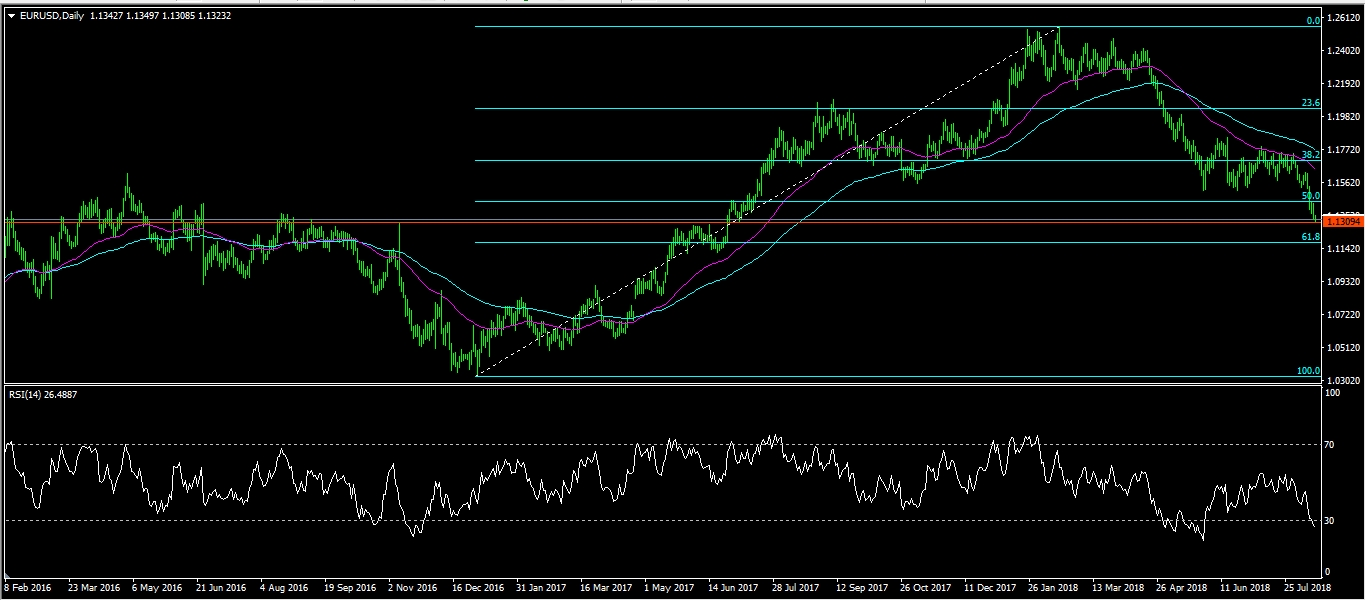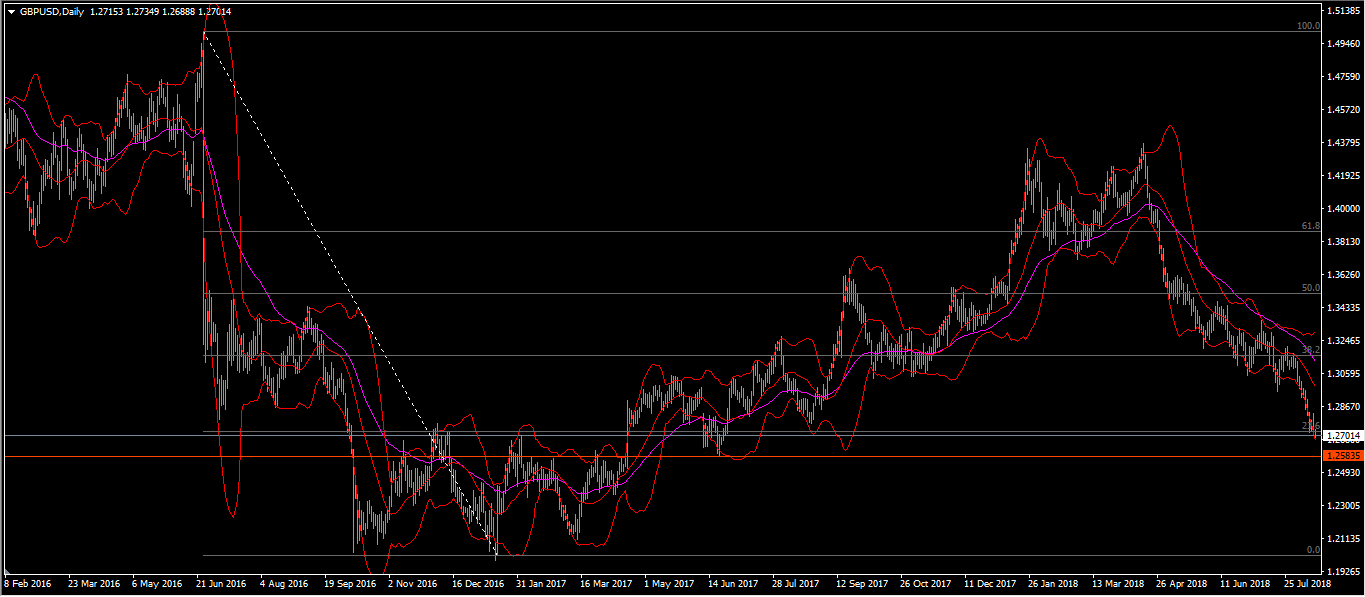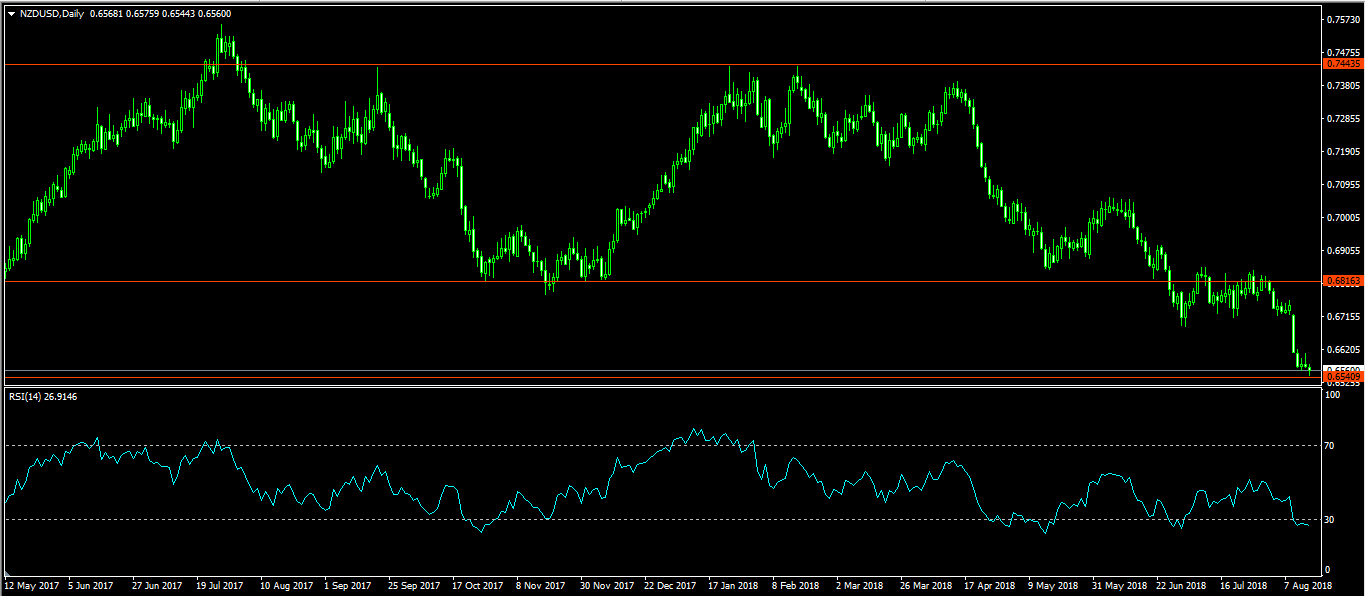The world markets declined today as concerns over Turkey continued. The country announced its retaliatory tariffs on the United States, which recently increased its tariffs on Turkish steel and aluminium. In 2016, the trade between Turkey and the United was worth $22.9 billion. The US exported goods worth $22.4 billion to Turkey while Turkey’s exports to the US was worth $9.2 billion. There was also a concern on the growth of China, which reported disappointing industrial data yesterday. The DAX fell by more than 1% while the Shanghai Composite dropped by more than 2%. The US markets will open lower, with the Dow falling by more than 150 points. At the same time, the dollar index rose by 30 basis points.
The pound continued to decline against the US dollar today after the country released key inflation data. The general CPI rose by an annual rate of 2.5%, which was in line with expectations and higher than June’s 2.4%. Monthly, the CPI was unchanged at 0.0%. The core CPI, which excludes the volatile product was also unchanged at 1.9%. The house price index rose by 3.0%, which was higher than the expected 2.8%, but lower than the 3.5% reported in June. The PPI output rose by an annualized rate of 10.9%, which was higher than the expected 10.4%.
The New Zealand dollar fell today after the country issued new guidelines banning the sale of homes to foreign buyers. The new move came after the house prices in the country rose by more than 70%. In a statement, the government said that the market for the land and houses was supposed to be directed by locals instead of foreigners. As the housing prices have increased, the number of residents who own their land was falling. Only a quarter of them own their homes. A report published by the Economist found that the country had the most unaffordable house price in the world. This has been caused by the rise in demand of the houses by Asian buyers who view the country as a safe haven from a potential nuclear conflict, terrorism, and civil unrest.
The US dollar rose today buoyed by the Turkey crisis. In addition, the US released better than expected retail sales data. In July, the core retail sales rose by 0.6%, which was better than the expected 0.4%. General retail sales rose by 0.5%, higher than the expected 0.4% while retail sales ex gas and autos increased by 0.6%. The non-farm productivity for the second quarter was upgraded to 2.9%, which was higher than the expected 2.5%.
The EUR/USD pair continued the decline today, reaching an intraday low of 1.1309. This was the lowest level since July last year. This price is below all the major moving averages, with the RSI on the daily chart being at 29. It is also closer to the 61.8% Fibonacci Retracement level of 1.1175. In the short-term, the pair is likely to continue moving lower. However, a reversal is possible as bears take profits.
GBP/USD
The GBP/USD pair continued the downward trend and is now trading at 1.2963. This is the lowest level since June last year. The pair seems determined to cross the 1.2583 level, which is the lowest level since late June last year. This price is below all the major moving averages and is at the lower band of the Bollinger Bands. The next main level that traders should watch is the 1.2583 level as shown below.
The NZD/USD pair fell sharply due to the stronger dollar and the New Zealand’s ban on foreign home ownership. The pair is now trading at 0.6560, which is the lowest level since January 2016. It is much lower than the pair’s YTD high of 0.7443. The descent accelerated when the pair moved below the important support of 0.6816. The RSI is at 26, the lowest level since June this year. It will likely continue moving lower to test the 0.6350 level.
General Risk Warning for FX & CFD Trading. FX & CFDs are leveraged products. Trading in FX & CFDs related to foreign exchange, commodities, financial indices and other underlying variables, carry a high level of risk and can result in the loss of all of your investment. As such, FX & CFDs may not be appropriate for all investors. You should not invest money that you cannot afford to lose. Before deciding to trade, you should become aware of all the risks associated with FX & CFD trading, and seek advice from an independent and suitably licensed financial advisor. Under no circumstances shall we have any liability to any person or entity for (a) any loss or damage in whole or part caused by, resulting from, or relating to any transactions related to FX or CFDs or (b) any direct, indirect, special, consequential or incidental damages whatsoever.
Recommended Content
Editors’ Picks
AUD/USD jumps above 0.6500 after hot Australian CPI data

AUD/USD extended gains and recaptured 0.6500 in Asian trading, following the release of hotter-than-expected Australian inflation data. The Australian CPI rose 1% in QoQ in Q1 against 0.8% forecast, providing extra legs to the Australian Dollar upside.
USD/JPY hangs near 34-year high at 154.88 as intervention risks loom

USD/JPY is sitting at a multi-decade high of 154.88 reached on Tuesday. Traders refrain from placing fresh bets on the pair as Japan's FX intervention risks loom. Broad US Dollar weakness also caps the upside in the major. US Durable Goods data are next on tap.
Gold price cautious despite weaker US Dollar and falling US yields

Gold retreats modestly after failing to sustain gains despite fall in US Treasury yields, weaker US Dollar. XAU/USD struggles to capitalize following release of weaker-than-expected S&P Global PMIs, fueling speculation about potential Fed rate cuts.
Crypto community reacts as BRICS considers launching stablecoin for international trade settlement

BRICS is intensifying efforts to reduce its reliance on the US dollar after plans for its stablecoin effort surfaced online on Tuesday. Most people expect the stablecoin to be backed by gold, considering BRICS nations have been accumulating large holdings of the commodity.
US versus the Eurozone: Inflation divergence causes monetary desynchronization

Historically there is a very close correlation between changes in US Treasury yields and German Bund yields. This is relevant at the current juncture, considering that the recent hawkish twist in the tone of the Fed might continue to push US long-term interest rates higher and put upward pressure on bond yields in the Eurozone.


